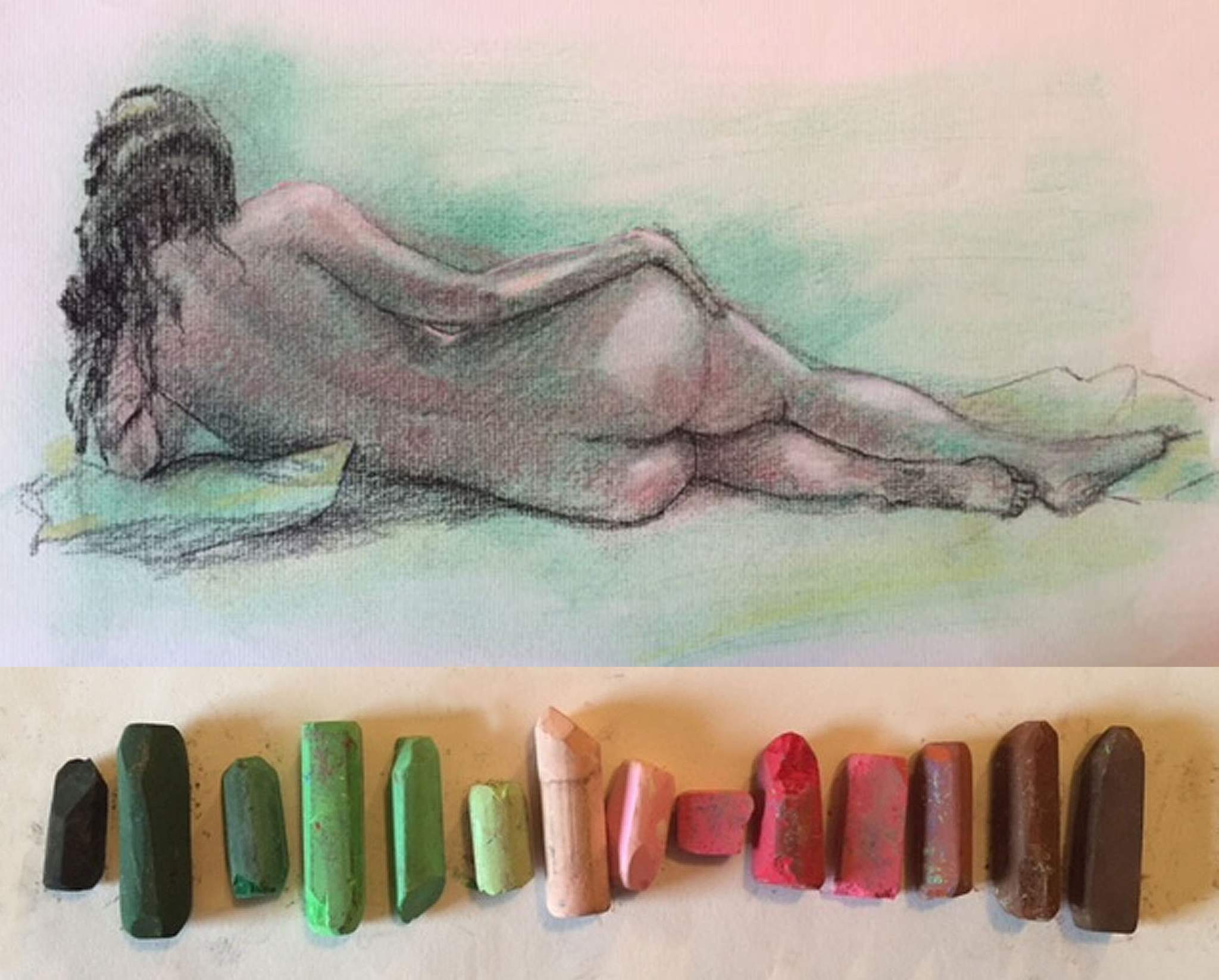THE DISCIPLINE OF LIFE DRAWING
Posted on January 12, 2017
While thousands people are hitting the gym this January, artists are known to hit the open studio life drawing class. This is where we practice our drawing skills on that hardest of subject, the nude model. Not only is the subject itself difficult, with all those challenges of anatomy, lighting and skin tones, but the model may only be holding the pose for a few minutes, or typically twenty, or at best, an hour.
Open studio life drawing sessions are usually available wherever there is a dedicated group to organize it on a regular basis. In Buffalo, they are at the University of Buffalo, Buffalo Arts Studio and many other locations around town. People show up with armed with every media, from a set of pencils, to a complete kit of watercolor or oil paints or even a block of clay.
Pastels are my tool of choice for their simplicity and immediacy. When you have only a few minutes to draw, you have to be armed and ready. I come in with toned pastel paper that has a bit of ‘tooth’. I organize a limited palette based on complementary colors. Complementary colors are the opposites on the color wheel. Across from the red is green, across from the yellow is purple and across from the blue is orange. Complements both enhance and neutralize each other. Here is an Green/Red palette. Ranging from the darkest to the brightest to the lightest shade for each color. From this simple group I can create a wide range of skin tones in any sort of lighting.
The best resources I have found for understanding color are ‘The Yin/Yang of Painting’ by Hongnian Zhang and ‘Imaginative Realism’ by James Gurney. These masters offer major inspiration. What works for you? You can send me a comment on my contact page. Thanks!
